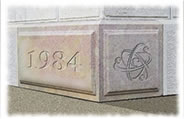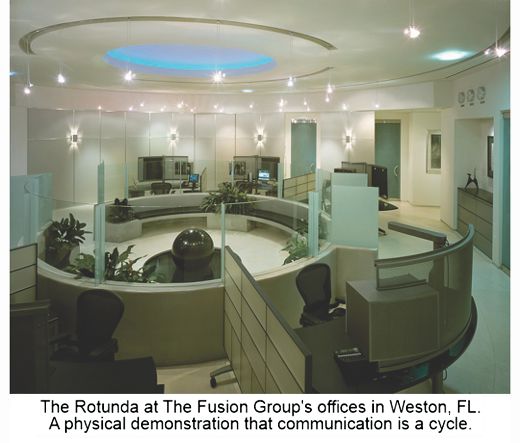The Circle Game
The “Back to Basics” Series
“We’re captive on the carousel of time
We can’t return, we can only look
Behind from where we came
And go ’round and ’round and ’round
In the Circle Game.”
— “The Circle Game”
Joni Mitchell
Canadian Singer and Songwriter
Grammy Lifetime Achievement Award — 2002
(1943 — )
Think about it.
- Planets orbit the sun in this solar system — and the Milky Way. There’s something natural about it.
- Comic Mark Twain did it in his day, with the last joke of the lecture gaining strength from its reference to those that went before. The last line bringing down the house as it re-used the introduction again as a concluding punch line.
- Music — well that’s where this circle thing really lives — three verses, each separated by a repeated chorus which then concludes the piece with a last reprise.
- Airplanes launch from a runway, then return to land — right spot on the same piece of tarmac — all to the greater comfort of the passengers.
- Storytellers take comfort in the time-honored tradition of the hero riding up Main Street into town at the beginning, then riding off down Main Street at the end into the final western sunset. It’s not a bad thing if a story ends with a bad guy in jail, and a happy hero; but it’s more satisfying if all the cycles are complete and the music rises as Shane rides off shadowed against the final western sunset…
It may have occurred to you that speakers may take instruction from these other specialties by incorporating the circle technique as well. Great speakers use the circle by telling an opening story, then a splitting of aspects of the story to introduce each agenda item, then circle around through the summary and finish the conclusion by referencing that opening statement — now as the close.
We have nothing against a straightforward ABC argument, but there’s a moment when an artful speaker makes a solid argument, then clinches it by referring back to his opening — and the listeners feel a sense of more-perfect completion as the presentation circles around and lands right spot on the place from which it launched, 20 minutes earlier.
Around our shop, we judge a presentation to be a real winner when it does that “all around the argument and back to starting point thing” in the most artful way. And it’s better yet if the listeners don’t see it coming. A little restraint let’s them catch on slowly — and prolongs their excitement and appreciation. So, you could say that when the circle technique works, the beginning and the end “Rhyme” and the audience goes “Ahhh!”
OK, you say; “So how do I build in that circular thing after I’ve already written the darned presentation?” Do I go back and re-write the opening after all that work?” Well actually, No! The thing is — the technique appears really hard — but isn’t.
The natural tendency is to start at the beginning. We think, however, that it might be more effective to start at the end and work backward. It sounds peculiar, but you actually begin by composing the next step — the end — then the main idea. Then the agenda, etc., until the very last thing you’re working on is the opening. So you don’t write the opening while wondering about the end. You write the ending and work backwards up the structure until your final task is to carefully fashion the opening so that it points unerringly to the end — right down Main Street into the final western sunset.
The short answer: “Begin by composing the end. End by composing the beginning.”
“The whole universe is based on rhythms. Everything happens in circles, in spirals.”
— John Hartford
Well he’s a musician of course — one of the great country banjo pickers — and he’s got a point. The universe is constructed in concentric circles and it’s got rhythm. So why not “relax into bliss” and go with it? If the circle thing works in the physical universe, why not then in the realm of speaking as well? We find that it’s one thing to end a presentation, but it’s better to give it a “sense of completion.” If your presentation is not merely logical, but lyrical as well, you and your audience can win on all levels — and it rhymes.
Applications
1. Personally
There may be more to this circle thing than initial inspection might suggest. What if it’s not just circles, but cycles as well? What if your day is composed of circular cycles of action? Stay with me here… Have you ended a job, without returning a tool to its proper place? Finished a meal without clearing the dishes? Put down a book without getting to the end and storing it on the shelf? All broken circles — incomplete cycles. No sense of completion. Get the idea that incomplete cycles may not kill you, but they take up mental real estate, and get in the way of clear thinking — too much mental clutter. It’s hard enough to compose a presentation. We suggest clearing away the unfinished cycles and start fresh.
2. At Home
The kids and the family are a built-in audience — not dying for a story perhaps, but open to a pleasant surprise. Imagine the fun and the emotional dividend involved in telling a great story — especially one that goes full circle and touches down where it lifted off. Get extra credit for pulling some of the colorful details from the lives of your own family… Thanksgiving is on the way. Get started now…
3. At Work
Use the Circle to your team’s advantage next time you pitch. Relating your next step back to the opening in a lyrical way may be the distinction that sets you apart from all your competitors.
Going in circles can be sheer frustration. But coming round full circle brings with it that sense of more perfect completion. Days full of meetings with logical, workmanlike presentations may seem more like going round and round and round. When you get the opportunity, take your chance to stand out by moving your presentation, your team, your family or your clients from merely logical all the way round to lyrical! You can all Win the Circle Game!
Dessert:
“Here and Now” (Meditations on Procrastination)
—Ellen DeGeneres
Comic and Talk Show Host
(Grant yourself an hour vacation and watch a master at work. In this four-segment routine she goes off and comes back — full circle — with a slow and steady build which concludes right spot on, where it began. She doesn’t bring the house down, as much as she takes the house with her — no swearing, no darkness, no anger, no venom — a soft comic who simply romances everyone into a gentle good time. She also demonstrates a powerful point about today’s concept: “Circularity…”)
Subscribe to our Newsletter


